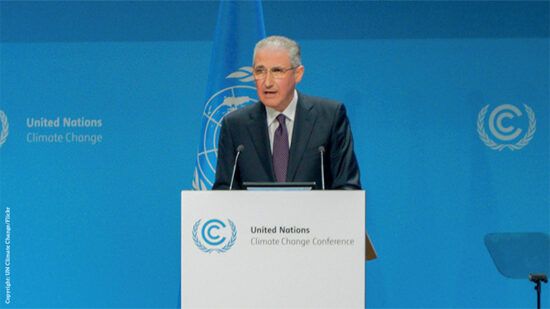Sustainable food investing has gained a good deal of momentum in recent years and for good reason too.
The United Nations (UN) estimates that the food industry is responsible for 30% of global energy consumption and 22% of the gases that contribute to global warming. Equally, livestock reared for human consumption is estimated to account for nearly 15% of these global emissions. With the world’s population expected to surpass nine billion by 2050, food production must increase by 60% to meet demand. Investing in sustainable methods of food production is crucial to the survival of the planet and its inhabitants.
See also: Shareholders vote against ShareAction’s resolution for improved Nestlé health targets
Food systems relate to many of the Principle Adverse Impact indicators (PAI have been established by the EU’s Sustainable Finance Disclosure Regulation as means of measuring the impacts that companies have on the environment and society): carbon emissions generated from fossil fuel reliant machinery, biodiversity loss caused by monocultures, water emissions resulting from soil leakage and hazardous emissions caused by synthetic fertiliser dependency. Investment into sustainable agriculture can address all these adverse impacts however, when done properly.
The definition of sustainability, according to Oxford Languages, is the “avoidance of the depletion of natural resources to maintain an ecological balance”. This definition is crucial because some investment managers have distorted it, disregarding the inherent relationship between humanity and our planet. This distortion is particularly evident in food investments. While the focus is often on the supply issue due to population growth, allocating capital to large food conglomerates may not lead to sustainable production of nutritious food. In fact, historical evidence suggests the opposite.
Data from the academic study Temporal Change in Iron Content of Vegetables and Legumes in Australia: A Scoping Review highlighted five cases where food is losing its nutritional value (Iron Content (mg/100g)a) over time. To invest in food sustainably, we need to ask, how we create nutritional food while avoiding the depletion of natural resources.
Fund managers should look beyond the simplistic scale of ‘organic’ food revenue as a measurement of sustainable food production and seek to assess agricultural investments from a holistic ecosystem perspective in order to invest sustainably in this space.
Regenerative agriculture is one way in which investors could measure the production of highly nutritional food and sustainable land usage that benefits humanity while improving planetary ecological balance. Regenerative agriculture typically consists of reduced tillage (preventing soil erosion), cover cropping and crop rotation (increasing soil mineral diversity), reduced usage of mineral fertiliser and the integration of livestock into crop management. These practices are starkly different from the monocultures and intensive management practices of standard farming, and have quantifiable benefits for people and the planet.
Investing in the right agriculture practices can have a positive societal effect. For example, the study Soil Health and Nutrient Density provides data on specific crops and proving the average nutritional value is higher in regenerative agricultural operations than conventional ones.
Investment can also have a positive ecological effect. The analysis in Emily Rehberger et al 2023 compared studies on organic carbon soil levels and showed an increase in soil carbon levels through regenerative methods. This is vital to reducing the concentration of GHGs in the atmosphere.
Thankfully, some funds are already investing with regeneration in mind.
Take Lombard Odier New Food Systems, for example:
- It invests in companies whose growth will benefit from regulations, innovations, services or products related to more environmentally-friendly agricultural and food production, as well as distribution and diets aligned with the transition to a more circular, leaner, more inclusive and cleaner world.
This includes investing in the transformation of land and ocean systems to sever our reliance on them for food production and promotes sustainable forestry, restoring land and returning ecosystems back to nature.
50% of the companies held within the portfolio must have at least 25% revenue exposure to environmentally sustainable “green” activities or be dedicating more than 50% of their capital expenditure to “green” activities. Importantly, revenue exposure to “red” activities is capped at 5%.
The Pictet Regeneration fund is another good example.
- It invests in companies with a low environmental footprint whose products and services contribute to solving two closely linked environmental challenges: biodiversity and the circular economy.
- These include companies where a significant proportion of their activities are related to renewable resources, ecological design, optimised production, the biological cycle, smart consumption and waste repurposing.
- They target a range of issues such as climate change mitigation, adaptation, sustainable use and protection of water and marine resources, to name a few. But also seek to support the development of social, inclusive and sustainable communities with adequate living standards and well-being.
In order to invest sustainably in the food system, fund managers should look beyond agricultural efficiency and scale of food production. They should instead seek to deeply understand the role these companies play in the relationship between humanity and the planet as well as quantify positive impact of our symbiotic relationship.








